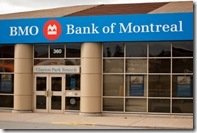 Despite all the 2.99% five-year fixed offers in the market, there are still lenders playing people for fools by advertising “special offers” of 3.99%+.
Despite all the 2.99% five-year fixed offers in the market, there are still lenders playing people for fools by advertising “special offers” of 3.99%+.
The good news is, there are now fewer of them.
More and more, banks have been advertising in-the-ballpark rates up front, as opposed to the phony “special offers” they’ve been posting for years.
TD Canada Trust is one such example. Despite the uptrend in bond yields over the past six weeks, TD has trimmed its online 5-year rate to 3.19%, a spread of just 165 basis points above bonds. Historically speaking, that’s a thin margin for TD’s advertised 5-year pricing.
TD is also offering a decent 2.79% three-year rate and a 2.99% four-year rate that matches levels seen during the winter of 2012 “rate wars.”
RBC is another example. At 3.29%, its advertised pricing is noticeably better than normal on 5-year money. It has also just extended its “special offer pricing” by another month (to Feb. 28, 2013, barring rate increases).
 Meanwhile, BMO continues to break ranks and feature the lowest Big 6-advertised 5-year fixed rate in Canada at 3.09%, albeit for a restricted product. (RBC and TD are content to price 10-20 basis points above BMO, knowing that many pay more for flexibility.)
Meanwhile, BMO continues to break ranks and feature the lowest Big 6-advertised 5-year fixed rate in Canada at 3.09%, albeit for a restricted product. (RBC and TD are content to price 10-20 basis points above BMO, knowing that many pay more for flexibility.)
Scotiabank has also been advertising reasonable rates for selected terms, like 2.79% for a three-year fixed. That’s despite its not-so-“special offer” 3.99% five-year fixed.
Eventually, CIBC and National Bank will also come around.
It’s in the Big 6’s interest to end the madness of artificially high advertised rates, regardless of their long-proven discretionary pricing strategy. Today’s most desirable mortgage consumers are more informed than ever. The abundance of online data makes it child’s play to benchmark a bank’s advertised rate against its competitors.
Moreover, the advent of rate comparison sites are making consumers increasingly jaded towards lenders who post 3.99% when the real market is at 2.99%. You have to be either gullible or weakly qualified to pay 3.99%, and seemingly everyone knows it. Promoting inflated rates therefore hurts bank credibility and creates a needlessly adversarial mindset in consumers.
 Once all the majors move to reasonable up-front pricing, it will become a different market. Their displayed rates will be closer to brokers and discount lenders, and customer negotiations will begin at a lower rate. (Banks rate-match all the time, but this discussion is solely about advertised rates.)
Once all the majors move to reasonable up-front pricing, it will become a different market. Their displayed rates will be closer to brokers and discount lenders, and customer negotiations will begin at a lower rate. (Banks rate-match all the time, but this discussion is solely about advertised rates.)
There’s no telling how long it will take before all banks offer everyday low rates. TD tried it in 2002-2004, as did BMO from 2005-2006, but those were short-lived experiments. They also pre-dated the dawn of mainstream rate comparison sites.
Today’s rate discounting may prove to be merely a pre-spring fling for the banks—leaving us disappointed when they go back to frivolous “special offers.” Or, maybe it won’t. We’ll have to watch their follow-through in the next few months. Long term, however, we’re absolutely certain that banks will both position themselves as, and be, more competitive.
Rob McLister, CMT







These “special” rates are like MSRP at a car dealership. Why banks would want to make getting a mortgage like buying a car, I’ll never know. Wouldn’t they prefer to be viewed as trusted advisers instead of dickering salespeople?
newsflash to banks…consumers now can search this new great discovery called the internet to get bargain rates way lower than the banks ‘special offers’
I like that the banks post special rates like 3.99%. Any time they can turn the consumer sentiment in a negative way towards the big six is fine by me.
I managed to get 95 basis point’s off posted rate this past December. Do your research, it pays.
Do you think 2.93% 5 year fixed close mortgage that Scotia offer me is a good deal?
Anything under 3% is a good deal.
Does this mean they are getting more aggressive/desperate? i.e. they expect a cooling real estate market
Unfortunately, there are always going to be people who simply check off a box and “sign below” upon renewal for a high rate because that’s their bank and that’s where they’ve always banked. Plus their busy lives get in the way of taking the time to do some research.
Will this have an eventual effect on the Qualifying Rate?
Posted rate vs discounted rate will factor into the IRD.
It is not just the rates you have to be looking at but also the terms… the % “saved” in a lower rate can be recouped with a longer Amortization and MUCH steeper penalties…